This was published 9 months ago
Violence, anxiety in students as young as 5: Marks of the COVID generation
In part two of this series, experts discuss reports of students struggling and teachers being physically attacked in the aftermath of school closures during the pandemic.
By Jordan Baker and Lucy Carroll

The Herald convened experts on education and child social development to assess the impact of COVID on students.Credit: Matthew Absalom-Wong
Young children are losing control and hitting out at teachers, while older students are struggling with anger management and problem-solving because they could not practise key social skills when schools shut during the COVID-19 pandemic.
Their difficulties are turbocharging anxiety, depression and technology abuse, a panel of top psychologists and educators has warned.
The COVID fallout: Education
This month marks four years since China’s COVID-19 outbreak was deemed a public health emergency of international concern, heralding the start of a traumatic period many of us would prefer to forget. While a federal government inquiry is examining some national responses to the crisis, key decisions made by states will not be properly scrutinised.
The Herald is concerned our political leaders have not adequately studied the lessons – good and bad – of our most recent experience, and we plan to ask tough questions over the coming months about the pandemic’s impact on education, health, border closures and lockdowns and policing. This is the second of our three-part series looking at the impact of COVID on education. The forum discussions with nine expert panellists were broken up into two sessions: one examining the wellbeing and behaviour of students, the second on academic and learning disruption.
The closures also led to a truancy crisis and sent the number of students refusing to go to school skyrocketing, as struggling students viewed class as something which they could opt out of.
“This is the long tail of COVID that we predicted for kids,” said National Children’s Commissioner Anne Hollonds. “We didn’t have children and their unique needs on our radar when those decisions [to close schools] were being made.”
The Sydney Morning Herald convened experts on education and child social development to assess the impact of COVID on students after the federal government failed to include the decision to close schools in its independent inquiry into how the nation managed the pandemic.
Five experts – Hollonds, director of wellbeing at Catholic Schools Parramatta Diocese, Greg Elliott, child psychologist Kate Plumb, adolescent expert Michael Carr-Gregg and Sydney Secondary College Blackwattle Bay campus school captain Bede Warnock – were united in their view that the needs of children had been overlooked in the pandemic, and the impacts of that had been far-reaching. Carr-Gregg was unable to attend in person on the day.
They called for a plan for future closures that put the long and short-term needs of children at the centre.
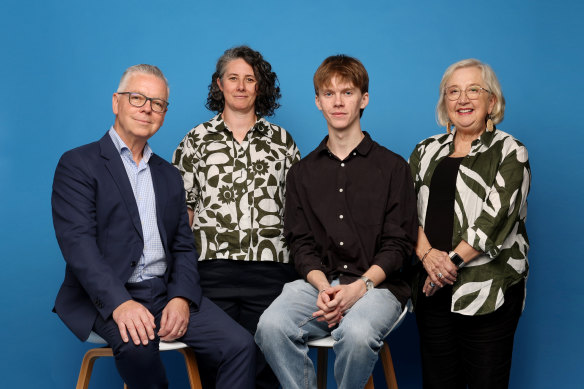
Herald panellists (from left to right): Catholic Schools Parramatta Diocese director of wellbeing Dr Greg Elliott, child psychologist and former school counsellor Kate Plumb, Sydney Secondary College Blackwattle Bay school captain Bede Warnock and National Children’s Commissioner Anne Hollonds. This panel discussed the COVID impact on student wellbeing and behaviour.Credit: Dylan Coker
NSW schools switched to remote learning for seven weeks in 2020, and for just over three months in 2021. During the rest of the pandemic years, schools had strict infection-control rules which disrupted learning and social interaction. They ranged from not allowing visitors on site, including parents and medical professionals, to banning different cohorts of students from mixing.
Elliott, who runs wellbeing services for 45,000 students in more than 80 schools, said children had missed out on important steps in their social development. That disruption also affected early childhood education, and so many of the five- and six-year-olds now beginning kindergarten were “the most dysregulated students we’ve ever seen entering school” (dysregulation involves emotional reactions that are outside a typical range for their age).
‘This impact has a very long tail and we haven’t seen the end of it.’
Adolescent expert Michael Carr-Gregg
“The rates of assaults on teachers in early stage one, so kindergarten and year one, has increased dramatically, not just in our [Catholic] system but across all systems … [there are] teachers who’ve been hit, kicked, slapped, pushed over, things thrown at them,” Elliott said. “It’s very distressing for teachers.
“Families weren’t able to access early intervention during the pandemic. And families also didn’t have a normative reference of what little kids’ behaviour should be like to get ready for school. Without that basic intervention and socialisation they come into a highly stimulating big social environment and can’t cope.”
Carr-Gregg said two heavily disrupted years hindered high school students’ opportunities to hone the self-regulation abilities – anger management, conflict resolution, problem-solving – that they would otherwise have practised in the playground. “Emotional self-regulation is out the window,” said Carr-Gregg.
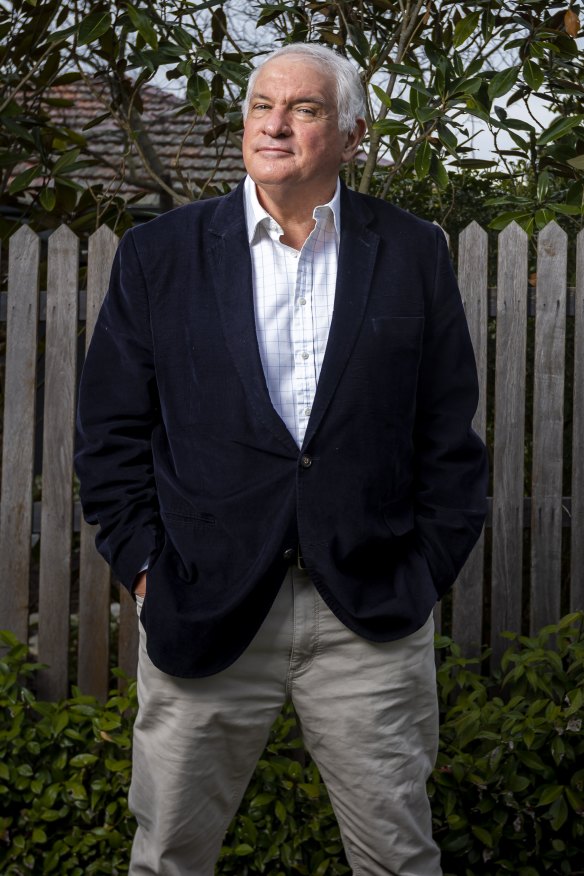
Psychologist Michael Carr-Gregg said he was seeing elevated rates of anxiety and depression and a whole range of mental health challenges, including deliberate self-harm and eating disorders. Credit: Wayne Taylor
Speaking remotely, he pointed out that the closures challenged adolescents’ ability to perform their four key developmental tasks: separating from parents; forming peer relationships; attending school; and taking risks.
As a result, “I’m seeing elevated rates of anxiety and depression and a whole range of mental health challenges, including deliberate self-harm and eating disorders,” he said. “I think children, the ones I’m working with, missed out on normal developmental opportunities throughout the pandemic and their social skills are completely out of practice, and that in turn is having a long-term impact on their mental health. This impact has a very long tail and we haven’t seen the end of it.”
Responding to questions about the Herald’s series, Education Minister Prue Car, who was in opposition during the pandemic, said the decisions were based on the best possible expert advice.
“It shouldn’t shock anyone who works in education that in many ways the COVID pandemic has had a huge impact on our children and their futures, particularly in areas that were subjected to harder lockdown,” she told reporters.
“It is why we as a government are serious about putting counsellors in schools because of the mental health challenges as a result of the pandemic, particularly for our secondary school students.” It was also one of the reasons behind a pay increase for school counsellors, she said.
There is little reliable data to measure lingering emotional and psychological impacts of COVID. The impacts vary between students, schools and families.
But child psychologist Kate Plumb has witnessed issues, too, particularly among those with special needs. “Those young people who started in year 7 in 2021 are really struggling, like extraordinarily,” she said. “School avoidance, increased anxiety, questioning neurodiversity – it’s almost like they’ve imploded.
“The decision to send all students back to school at once in 2021, rather than stage a slower re-entry, also left some reeling. And then all of a sudden, it was like, go back to school. No ‘ifs’, ‘ands’ or ‘buts’. They found that very jarring. The coping skills were just tapped out.”
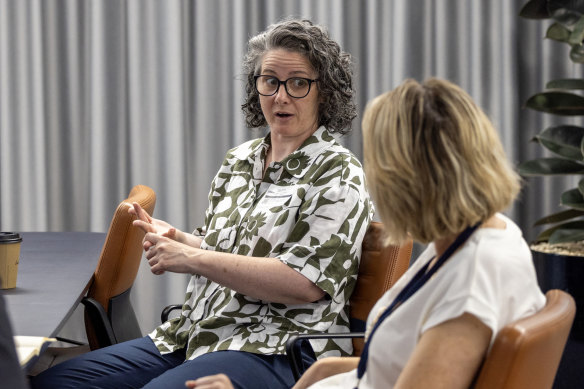
At the roundtable, child psychologist and former school counsellor Kate Plumb said students who started year 7 in 2021 are still struggling.Credit: Dylan Coker
A key but overlooked issue was sleep, said school captain Bede Warnock, a view supported by other panellists. Many high school students completely subverted their habits during the pandemic. “They would log onto online school at eight, fall asleep at nine, and sleep the rest of the day,” he said.
“It’s become a little more normal, but for a lot of people I feel like it also hasn’t.”
Elliott agreed. “They found it very difficult to adjust. And you know what a teenager is like when they haven’t had enough sleep. They can be either entirely disengaged or anti-social. Some of that is still the case.”
Data shows absenteeism has surged since lockdowns; the proportion of children with attendance problems has risen from 25 per cent in 2019 to more than a third last year, and school refusal has become an intractable problem.
Before lockdowns, most students assumed there was no option other than attending school, even if they struggled to fit in due to mental health issues or neurodivergence.
“It was just what the community expected; you go in and you put up with it,” said Elliott.
Remote learning gave them an alternative. “When we snapped back to regular school, there was a whole cohort of students who could not snap back,” he said. “And we’re still seeing that now with high rates of people refusing to attend school.” As Plumb said, “the mask came off and the mask couldn’t go back on.”
Carr-Gregg, who is based in Melbourne, said refusal might also be driven by psychological distress being intensified by lockdowns. “It disrupted their routines, it created social isolation, and the thing about social isolation is it’s just about the worst thing for mental health,” he said.
No one knows how to fix the school refusal problem, which is estimated to effect between one and five per cent of students. “In most cases parents have tried everything to get their kid back to school … and the school says, well, they just have to come back, that’s the law,” Plumb said.
But waiting lists for psychologists have blown out beyond six months, and many parents don’t know how to find help for their children, or have the resources to pay for it.
They also felt a deep sense of shame, said Elliott. “There’s no parent who doesn’t understand that part of being a mum or a dad is to get their kid to school … which is often why it’s so late when they ask for help.”
Plumb said many schools had also failed to return to pre-COVID norms when it came to welcoming parents and outside services like hers back onto the grounds. “It was kind of like the system closed ranks, and they haven’t opened yet,” she said.
“Depending on the school, depending on who’s in charge, I can either have quite productive conversations with schools or I’m gate-kept by the front office. I can’t get beyond that. Parents can’t get into the school.”
Questions remain over how many students dropped out of the system entirely during COVID. “There was a group of kids who had [been] loosely connected to school before. I think we lost thousands of them,” said Hollonds.
Warnock was almost one of them. After disruptions throughout years nine and 10, he’d told his mother he would leave at the end of year 10; “I’m just I’m not into academia, it’s not for me.” And then he visited his high school campus, was re-energised and changed his mind. Now he’s school captain.
Intensive technology use also became normalised during the pandemic, as students spent entire days on Zoom, interacted with their friends online through gaming or social media, and younger children were given screens by parents who were juggling homeschooling with the demands of their own jobs.
Regulators have since reported higher rates of cyberbullying and sextortion among young people. Elliott, who has doubled the number of counsellors in his system since the pandemic, said that had been reflected in the experience of his schools.
“There has been an increase in the inappropriate use of social media since COVID,” he said. “There was poor supervision of children using devices. So having to explicitly teach good behaviours and safe behaviours with social media has been a theme ever since.”
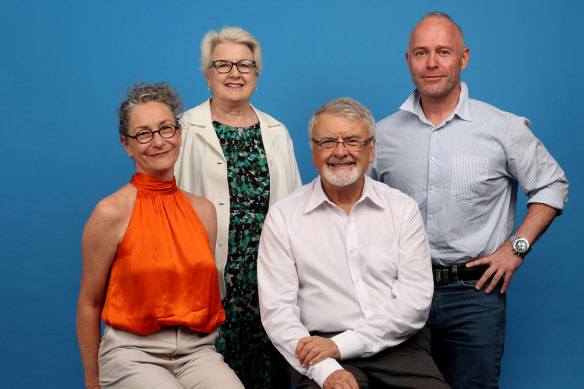
Australian Education Research Organisation chief executive Jenny Donovan, Fairvale High School principal Kathleen Seto, NSW Education Standards Authority chair Professor Peter Shergold, and Catholic Schools NSW chief executive officer Dallas McInerney participated in the panel discussion on the academic impact of COVID in NSW.Credit: Dylan Coker
It’s a shift Warnock noticed among his friends. “Everyone became so dependent on social media to communicate.”
For some students, online interaction during school closures was a lifeline and protected their social connections. But for others, the tech world became all-consuming, said Carr-Gregg.
“[Those who] were already pretty disenfranchised and gamed by themselves, they’re the kids who’ve developed all sorts of problems, including porn addiction and an absolute reliance on YouTube as a source of mental stimulation. Those kids are really stuck now.”
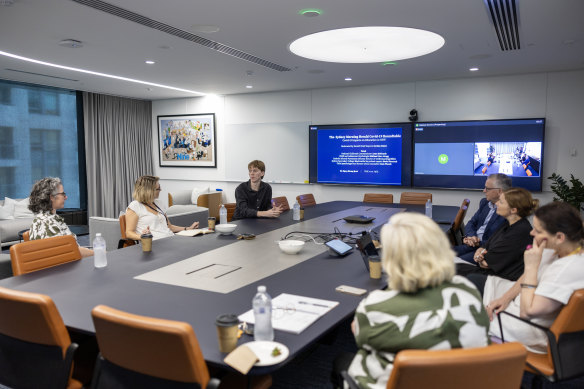
School captain Bede Warnock makes a point at the Herald’s education forum.Credit: Dylan Coker
The students hardest hit by the shutdowns have been those with special needs, who make up at least one in 10 of NSW’s student population but did not get much-needed diagnoses or intervention during two years of pandemic-affected education.
Many remain alienated from the school system. “What COVID did was … revealed the vulnerabilities that were already there, amplified them and was the catalyst to turn them into something more pathological,” said Elliott.
“[Schools] are also the protective factor, the connective tissue in the community that keeps kids well. And we lost that. And that was a huge health and safety risk.”
Hollonds agreed. Children already struggled to access support before the pandemic, “then COVID hits and the lockdowns come in and it just amplifies what is really an inadequate set of systems to cater for the needs of kids generally.”
The panel stressed the need to plan for any future school closures, whether they’re driven by pandemic, floods, fire or other unforeseen reasons, and to build the needs and rights of children into decision-making. It was critical of the failure of governments to assess the impact of school-related decisions during the pandemic, and look to international experience for alternative approaches.
“There’s nothing about children or child well-being in the federal architecture,” said Hollonds. “There’s no chief pediatrician in the country. We need to recognise that education is core to the lives of children and families in so many ways and, and that we need to see them as a hub, as a connector.
“But the other thing is to recognise the role of the school as not just about academic learning … which is [how] I think it was seen, largely, but that it’s a social learning environment. So [we need] a plan that would acknowledge this as one of the unique elements, the needs of children. That learning is a social thing.”
The Morning Edition newsletter is our guide to the day’s most important and interesting stories, analysis and insights. Sign up here.